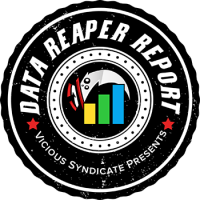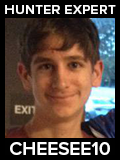
Welcome to the 216th edition of the Data Reaper Report!
Contributing to the Data Reaper project through Hearthstone Deck Tracker or Firestone allows us to perform our analyses and to issue the weekly reports, so we want to wholeheartedly thank our contributors. Without the community’s contributions, there would be no project. Contributing data is very easy, so if you enjoy our content and would like to make sure it remains consistent and free – Sign up!
Quick Links
Class/Archetype Distribution | Class Frequency | Matchup Winrates | vS Power Rankings | vS Meta Score | Class Analysis & Decklists | Meta Breaker of the Week | How to Contribute | Credits
Number of Games
| Overall | 260,000 |
| Top 1K Legend | 12,000 |
| Legend (Excluding Top 1k) | 55,000 |
| Diamond 4 to 1 | 43,000 |
| Diamond 10 to 5 | 46.000 |
| Platinum | 34,000 |
| Bronze/Silver/Gold | 70,000 |
Class/Archetype Distribution
[TABS_PRO id=54110]
Class Frequency
[TABS_PRO id=54111]
Class Frequency Discussion
Don’t be fooled by premature statements about how the balance changes did nothing. This report is probably the biggest one we’ve ever produced in terms of working hours. The amount of information about new decks popping up is unprecedented and caused us to finish this piece later than any report we’ve done before. There’s a lot to process, and these new decks need a lot of fine tunings.
We start with Rogue. Remember what we said about the Secret build of Thief Rogue (now labeled as ‘Secret Rogue’) showing the most promise? Scratch that off. Everything about Thief Rogue changed within days, with non-secret builds exploding at higher levels of play. There’s great build diversity here, and there’s a big difference between Thief Rogue builds at different rank brackets. Poison Rogue is another deck that’s increasingly common at top legend. Quest Rogue remains a modestly popular choice, while Garrote Rogue has slipped in play following the nerf to Octo-bot.
Mage has attracted a lot of attention thanks to the buffs it has received. Wildfire Mage is an extremely messy archetype with plenty of experimentation going on. We will probably attempt to split it once variants are curated into more solidified clusters, but there is plenty of good information about these variants in this report already. Mozaki Mage was untouched by balance changes that addressed several of its rivaling combo strategies, so it’s seeing more play, especially at top legend.
Shaman has been hit by the nerf to Snowfall Guardian, but this hasn’t changed its extremely diverse set of options. There are no less than five different Shaman archetypes seeing play, and a sixth is on its way. Freeze, Bolner, Burn, Elemental, and Quest Shaman are all noticeable throughout ladder. Evolve Shaman is beginning to show up, ever slightly so.
Hunter is settling into its usual pattern of running Face Hunter while no other archetype within the class is gaining much traction. But Big-Beast Hunter is in the process of cleaning up, fully focusing on the Vanndar variant we’ve mentioned before the patch, while Quest and Secret Hunter are also showing some subtle movements.
Druid has exploded into a ridiculous number of decks, as if the Celestial Alignment nerf was the big bang the class needed to form new clusters of strategies. Quest Druid is getting hyped up. Ramp Druids of different kinds are seeing play. Clown Druid is lurking. Even C’Thun Druid has popped up. There are also the faster Druid decks trying to stake a piece of the meta pie, with Taunt, Beast, and Drek’Thar Druid being spotted.
Demon Hunter is another diverse class. Things seem to be gravitating towards Fel DH becoming the dominant archetype, with Deathrattle DH looking secondary. From the ashes of Lifesteal DH following the nerf to Artificer, Brute Quest DH is attempting to rise.
Paladin is mostly adjusting to the nerf to Irondeep Trogg, with Libram and Buff Paladin figuring out their next step. Not much experimentation is seen here compared to other classes.
Warlock is in the process of bidding farewell to most of its decks. Most notably, Owl Warlock is dying out after receiving multiple nerfs in the patch. The only Warlock deck seeing a decent amount of play where the meta is most advanced in its development (top legend) is Handlock.
Similar story in Warrior, where no strategy other than Quest Warrior is remotely visible. Priest is exhibiting its pre-patch pattern. Big and Quest Priest are common on ladder, but disappear at top legend, where only Miracle Priest remains, split into its Malygos variant and its Rally variant, the latter affected by the nerf to Irondeep Trogg.
[TABS_PRO id=54112]

[TABS_PRO id=54113]
vS Meta Score
[TABS_PRO id=54114]
vS Power Rankings Discussion
The first thing we want to say about the current meta is that there are more viable decks in the format than the player base and content creators can even handle. There are a ridiculous number of competitive decks seeing very little play and going through very little refinement work. We’ve worked tirelessly to address and feature all of them, even when we were limited by sample size issues with some. These new decks will also naturally look worse than established decks that went through refinement, so we need to get the ball rolling before we can tell how they truly match up. For this reason, we’ve added a low sample estimate table, for decks we see promise in but lack enough matchup data.
- Rogue
- Thief Rogue is the best deck in the game. Its performance at top legend far exceeds how it looks throughout ladder, but this isn’t a Garrote Rogue kind of deck. The performance disparity is driven by refinement that’s mostly advanced at higher levels and has yet to trickle down. The archetype also naturally attracts meme builds at lower ranks, since it has historically been a meme deck. Not anymore. Thief Rogue is a meta-defining strategy that will set the tone for the format over the next few weeks.
- What’s most interesting about Thief Rogue is that it excels at establishing the initiative through Wildpaw Gnolls, and therefore, denying the initiative from aggressive decks. The best way to counter it is through removal, so its success promotes slower strategies with strong defensive tools. In laymen’s terms, it promotes… “Control”.
- Of course, Valeera cannot neglect its off-board strategies. Poison Rogue looks extremely powerful, especially at top legend, where it is very clearly a Tier 1 performer alongside Thief Rogue. But the biggest difference from previous metas is that Poison Rogue should no longer be a top legend specialty. It is very strong throughout ladder if given the chance. This is probably the strongest the archetype has ever been.
- Can’t forget about Quest Rogue. This deck is very powerful and only drops off a bit where the meta is most competitive (and balanced in terms of win rates) at top legend. Initially, Quest Rogue looked stronger than Thief Rogue following the patch, but huge refinement strides flipped things around. Thief Rogue had much to improve, while Quest Rogue’s best build was already established.
- The nerf to Octo-bot did not obliterate Garrote Rogue. The deck is still very viable and competitive, but what’s killing its play rate is that there are three Rogue decks that are just stronger. Times change.
- Mage
- Wildfire Mage seems to generally suck, but as we’ve said earlier, the archetype is a mess and needs to clean up badly. Its best builds are comfortably Tier 3 at the very least. That’s not good enough to keep its highly inflated play rate, and it should collapse, but what’s left will be far stronger than what the archetype looked like before the buffs. It’s a real deck now.
- Mozaki Mage initially displayed a positive win rate at top legend before players got sick of it and started running Poison Rogue. The field refuses to let it get too good because of its obnoxious play pattern, which we think needs addressing. A single Incanter’s Flow means the opponent is dead the moment Mozaki is drawn as early as turn 6. We don’t think that’s acceptable.
- Shaman
- Freeze Shaman is feeling the Snowfall Guardian nerf, possibly more than any other Shaman deck, but we wouldn’t write this deck off and think it should stay competitive. It needs to find a couple of good cards to complete a good list of 30.
- Bolner Shaman is looking better. Since it’s a slower strategy, it could handle the Guardian nerf better. It has better defensive tools for faster matchups and a stronger late-game finisher that is very relevant in some of the slower matchups.
- Both Elemental and Quest Shaman are extremely underrated and underplayed, likely because they’re ‘old decks’. Many of Quest Shaman’s bad matchups got nerfed, while Elemental Shaman is every effective against a variety of strategies. It also helps to have the added flexibility of two weapon packages that target different decks.
- Burn Shaman is arguably a bit overrated, considering it’s the worst-performing Shaman deck and its scope for improvement is low.
- What’s the best Shaman deck? It might not be the one listed in the Power Rankings, but the one in the smaller table. Yes, Evolve Shaman is looking very promising, and Tier 2 is a conservative estimate considering it has not gone through any refinement whatsoever. Boggspine Knuckles and Tiny Toys are doing work, and people haven’t picked up on it. Yet.
- Hunter
- Some things don’t change. Face Hunter is still one of the best decks in the format, having fun demolishing janky decks. We’ll see what happens when it starts to face more Fel Demon Hunters and Thief Rogues.
- Some things do change. Big-Beast Hunter is looking good! It seems to do worse where the meta is more ruthless and refined, but it also has some things it can improve on. There’s a good chance it will stay competitive and offer a real alternative to Face Hunter. For players who miss the days of Cube Hunter, this deck provides a similar late-game experience.
- Quest Hunter also looks playable, and common builds make one very clear mistake that can be addressed. Secret Hunter is similar in power, based on our estimate.
- Druid
- So many Druid decks! We’ll go through them all quickly. More details in the class section.
- Celestial Druid looks dead.
- Quest Druid gets countered by minions. That’s a problem.
- C’Thun is probably not the win condition you’re looking for in a ramping Druid deck.
- Carnival Clowns, Glowfly Swarm, and Yogg-Saron are probably the win conditions you’re looking for in a ramping Druid deck. Clown Druid and two variants of Ramp Druid exhibit Tier 2 potential, at the very least.
- Taunt and Beast Druid are both major Tier 1 contenders. Taunt Druid is weighed down by poorly optimized builds, while its best build is very much up there with the best decks in the format. Beast Druid is young in its development and already displays strong results. Drek’Thar Druid is another deck that we can see popping up again, with a promising (or terrifying, depending on your perspective) new form.
- Demon Hunter
- Fel DH is what Face Hunter fears the most. This deck has not fully figured itself out yet (which is partly why it performs better at top legend) and seems to be making a drastic shift after the balance changes. We can see it becoming a Tier 1 deck if it finds another breakthrough in its refinement considering how effective it is against both Face Hunter and Thief Rogue. There’s one card that we think could fix its current matchup weaknesses too. Early call for next week’s Meta Breaker?
- Deathrattle DH is a fine deck at all levels of play, though we expect it to remain relatively uncommon due to it being an ‘old’ archetype that we’ve been playing since around Wailing Caverns.
- Il’gynoth is gone. Irebound Brute may be coming back. Quest DH is another name in the list of sleeper decks that merit more explorations. Brute me, dude!
- Paladin
- Libram Paladin is still a fantastic deck that’s well-positioned to answer some of the strongest decks in the format. It’s an excellent counter to Quest Warrior for those looking for a consistent climb to legend. It benefits from Thief Rogue’s emergence at higher levels of play, which is overshadowing Quest Rogue and Secret Rogue, two of its most crippling counters. The Trogg nerf was a hit to its early game, but Libram Paladin has always been comfortable going late, and it might be fine-tuning its build to do just that.
- Buff Paladin is alright. Its biggest problem is that Libram Paladin is clearly the better deck, so it’s hard to justify playing it. The nerf to Trogg also affected it more.
- Warlock
- Things have somewhat flipped for Handlock’s experience on ladder. From a deck that used to perform particularly well at top legend, it’s now a dominant ladder performer that hits a wall at top legend. The reason is the presence of Mozaki Mage and Poison Rogues countering Mozaki Mages. Those matchups, along with Face Hunter, have become a bit of a problem.
- Still, Handlock is an obvious powerhouse and the strongest available counter to Thief Rogue in the format. Soul Rend is a hell of a drug, and that should count for something when it comes to its prospects in the future.
- Warrior
- So, remember that bit about Garrote Rogue being the most skill-testing deck we’ve ever seen? Quest Warrior might be the anti-Garrote Rogue, as in the least skill-testing deck we’ve ever seen. This deck dominates Bronze through Gold. It dominates Platinum. It dominates Diamond. It’s one of the best decks at Legend. Then at top legend, it sinks all the way down to Tier 3. Matchups drastically shift against it at higher levels. We’re talking about 8% differences on average. This deck feels overtuned for most players on ladder, but if you ever want to be a jerk to someone complaining about Quest Warrior, you can tell them to “git gud” and you’d technically be right. But you’d still be a jerk. Don’t be a jerk.
- Priest
- Poor Priest. Big Priest is so bad. Quest Priest is so bad.
- But Miracle Priest is alright. We estimate its win rate hovers around Tier 3, but the Rally variant of the archetype could be Tier 2. There’s a competitive deck here for those dedicated to learning this complicated strategy. You’ll probably be raging about Shadowcrafter Scabbs after playing it for a couple of days though.
Class Analysis & Decklists
Demon Hunter | Druid | Hunter | Mage | Paladin | Priest | Rogue | Shaman | Warlock | Warrior
Thief Rogue has emerged as the best deck in the format at higher levels of play, thanks to productive refinement that was conducted following the balance changes. This deck is powerful throughout ladder, but since the archetype is naturally inclined to run some terrible, meme-worthy cards, its aggregated performance may not show it at lower ranks.
The key is to abuse Wildpaw Gnoll as much as possible. Thanks to Maestra, every Rogue card you draw while in disguise discounts Gnoll, and since trading away a card does not remove your disguise, Blackwater Cutlass and SI:7 Extortion have excellent synergy with Gnoll. In addition, if your first played card is Secret Passage, Gnoll gets discounted by your Passage hand before your disguise is removed. So, the basic plan is to overwhelm your opponent in the early game with Wildpaw Gnoll and/or Double Agent.
To further the consistency of Gnoll and Double Agent, we run the “good” thief cards: Swashburglar, Wand Thief, and Reconnaissance. This is where we’ve found a specific addition that puts the deck over the top. Preparation has started to see play very recently and looks like a core card. It makes your Reconnaissance better. It makes Wand Thief better. It makes Swindle better. It works great with Edwin. Just put it in your deck and you’ll notice how good it is soon enough. The featured build is very possibly the best list of 30 cards you can play in the format.
There are other builds within the archetype we’ve evaluated to be inferior to this one. A combo package with Foxy Fraud and Coldtooth Yeti isn’t worth it. They can be strong early, but you already have a superior early game plan, and these cards get significantly worse as the game goes on. The “Cute” variant running Desk Imp, Murloc Tinyfin, and Frostwolf Warmaster can have its high roll moments, but it’s incredibly inconsistent, and running so many neutrals in your deck hurts your Wildpaw Gnolls.
This new variant has completely eclipsed the Secret Rogue build from before the balance changes. The secret package tends to be a low pressure build with a greater focus on removal through Blackjack Stunners and value from Contraband Stash. It’s hard to make it “go faster”, without simply switching to no secrets.
But Rogue is seeing a lot of success beyond the new Thief archetype. Quest Rogue is very strong running the same build we recommended before the patch. Keep Wicked Stabs out of this deck, as they make your Swindles worse. Your burst comes from Battlemaster or Mr. Smite/Tenwu/Shadowstep.
Poison Rogue is disgustingly good as well. The full burn build with Guild Trader looks like the way to go. You can use Cutlass for damage if you can’t find Swinetusk Shank, but Cutlass’ most common role is to discount your burn spells so that you can finish off opponents with Guild Trader.
The nerf to Efficient Octo-bot may not have killed Garrote Rogue, as the deck remains very competitive at higher levels of play, but it caused Garrote to strangely find itself outclassed by other Rogue decks. Thief Rogue is all the rage now, dominating the early game like no other option within the class, while Poison Rogue’s late-game damage potential is hard to keep up with. There just isn’t a great reason to play Garrote Rogue.
The Mage buffs reignited interest in the failing Wildfire Mage archetype, and the deck has seen a lot of play and experimentation. Things look a lot better, but we don’t expect Wildfire Mage to be a top-tier performer. At best, it’s now playable.
Out of the assortment of garbage running around, we’ve managed to curate two relatively strong directions. The first is the Multicaster path. We’re running a low-curve, cheap build, with mostly low-cost spells that are easy to cast and fuel Multicaster. The purpose of this build is to aggressively draw, helping you find Magister Dawngrasp and Mordresh more consistently. Your ability to win games is highly dependent on your ability to find your win conditions and burn down the opponent, so this plan seems to work well. Though most of your spells are cheap, Dawngrasp still makes for a powerful standalone play.
The second build is heavier and runs a big-spell package, including Rune of the Archmage and Clumsy Courier. Ice Barrier and Deepwater Evoker can give you a lot of armor to sustain through burn damage. Fire Sale offers a very important board clear since your early game tends to be more passive. Arcane Overflow is excellent with Grey Sage Parrot. Mass Polymorph can carry some matchups, such as Paladin and Handlock. Magister Dawngrasp can win games on the spot when they’re played in this deck.
Both builds are very close in power, and their matchup spread doesn’t change as much as it may seem judging by how different they look. The Big-Spell variant is better against Paladin and Demon Hunter. It tends to perform better against strategies that rely on burn. The Multicaster variant is better against Hunters and other Mages. It tends to perform better in matchups where the Mage is assigned the beatdown role.
Mozaki Mage is the only ‘solitaire’ deck that wasn’t nerfed amongst the ‘solitaire five.’ Therefore, its initial standing in the meta significantly improved after the patch and it’s now a very common opponent at top legend. However, this deck seems to drive many players into countering it (probably because this deck makes Quest Mage look fun and interactive to play against), which keeps it in check to some degree. It has become a bit of a gatekeeper when it comes to allowing slower strategies to succeed.
Freeze Shaman is feeling the effects of the nerf to Snowfall Guardian, but we think this deck can recover in its win rate if it figures out the last two slots in its build. It isn’t worth running Vipers anymore since we included them mostly for Runed Mithril Rods, but the deck seems to have trouble finding worthy replacements. Serpentshrine Portal seems to be the best option that sees play, but we wouldn’t be surprised if someone finds a better card.
Bolner Shaman has an easier time finding cards that are better than the Vipers it previously utilized. Just run Auctionhouse Gavels. With Snowfall Guardian at 6 mana, it’s less likely that you’ll be struggling to corrupt your Dunk Tanks and Circus Medics because of Gavel discounts, and the upside of Gavel in a deck running so many battlecry minions is certainly there.
Burn Shaman has gotten a lot of hype, but its results don’t really justify it. It might be the weakest choice amongst a wide variety of Shaman decks. The featured build does have a lot of drawing power through Multicaster, Dungeoneer, and Macaw, but opponents usually don’t give you a lot of time to draw your burn and unlike some decks that were recently nerfed, you need to spend mana on your draw.
Elemental Shaman is displaying the strongest results out of all Shaman decks, and its play rate is more of an indication that with all the new options out there, players aren’t too eager to play a deck that’s been around since Wailing Caverns. The Freeze variant is the best one across most of ladder, while the Doom variant is a top legend specialty.
Quest Shaman is another “old deck” that’s producing good results. The balance changes helped the deck a lot, as it tends to struggle against lightning-fast combo strategies. You always run 4 Windchills.
Watch out for Evolve Shaman. This archetype likes to sneak up on Team 5 whenever they go on their Christmas break. It might not have ruined Christmas this time, but we see a lot of potential in this deck considering it’s producing very good results with unrefined builds. The featured list is just a preliminary draft, under the limitation of Evolve Shaman’s low sample. If our estimates are correct, this deck is very competitive, and its scope for improvement could even push it to Tier 1. Tiny Toys are very strong in the current format.
- Shaman Class Radar
- Freeze Shaman
- Bolner Shaman
- Burn Shaman
- Elemental Shaman
- Quest Shaman
- Evolve Shaman
Face Hunter is one of the best decks in the game. Still. Irondeep Trogg is the best card in the deck. Still (!). So, what’s new? Trueaim Crescent has started to see more play in this deck and it’s so strong with Ramming Mount that we’re willing to drop Arcane Anomaly and forget about Cult Neophyte.
The good news is that this section isn’t over. In fact, for the first time in what feels like ages, Hunter is a competitively diverse class. You can run other Hunter decks with the purpose of trying to win Hearthstone games. Big-Beast Hunter is genuinely strong and has gotten much better after the balance changes since it is being given more to execute its late-game plan, and it also got a nice Tavish buff. We slightly tweaked our pre-patch build to cut Humongous Owl for Revive Pets. Unfortunately, the bird doesn’t carry enough of its weight around. Petting Zoo looks impressive.
Quest Hunter is around in small numbers, so it’s been harder to refine. Tavish seems to be worth running, as drawing it early can allow you to complete the discount phase of the quest after playing it. Those chained 0-mana Animal Companions can seal games. We don’t think Dun Baldar Bunker is worth running, as keeping it in the opening hand to play it on turn 2 doesn’t seem to fit the deck’s general game plan. It could be worth experimenting alongside Petting Zoo, but that’s further deviating from the main game plan of the deck.
Perhaps a less welcomed development is the rise of Drek’Thar Secret Hunter. This deck has gotten better after the patch and looks like Tier 2, before dropping to Tier 3 around legend, likely due to a low skill ceiling. Turns out that a turn 4 Drek’Thar doesn’t require a lot of in-depth experience in Hearthstone.
So. Many. Druid decks. It seems that the nerf to Celestial Druid (which looks unplayable now) has opened so much space to explore the class, especially when it comes to its late-game strategies. Players are mostly trying to figure out how to best utilize Wildheart Guff, with mixed results. So here are the findings we’ve managed to collect.
Quest Druid is probably not the way because of how the deck is naturally countered by… old-fashioned board-based minion development. We will note that Overgrowth makes the deck dramatically stronger compared to Bloom. It’s not that Bloom is a bad card, but the deck is desperate for ramp. General rule is if you want to play Wildheart Guff, you want Overgrowth too. It’s also nice to always find Pounce off Capture Coldtooth Mine.
Ramp Druid is seeing a couple of iterations with decent promise. We can see both variants settling around Tier 2 post-refinement. The spell-centric, Glowfly Swarm build’s biggest mistake on ladder is wasting slots on minions like Malygos and Yogg-Saron. The only worthwhile minions to run in a Fungal Fortunes/Glowfly Swarm deck are cheap ones with immediate impact on the board: Speaker Gidra and Umbral Owl.
The second iteration relies on late-game threats to win. What we found surprising about this deck is the performance of the Old Gods in it. This might be the one Druid deck that wants to naturally run Yogg-Saron rather than find it with Resizing Pouch. Y’Shaarj is also pretty good with Strongman and Moontouched Amulet, to the point we’ve opted to cut one Guess the Weight. This is a tough decision, but GTW is a trap keep in the mulligan (you want ramp, and you don’t care about anything else!) and the lack of card draw could be less of an issue due to Guff.
Clown Druid is showing quite a bit of promise, with two approaches. We could run the old Guardian Animals build with Animated Broomstick, and simply slap Wildheart Guff on top of that shell. Or we could run a more spell-centric deck with Vanndar, Guess the Weight, and Moonlit Guidance. The Guardian Animals build has always been the dominant variant of the archetype, but this is the first time we’ve seen a real alternative. Guardian Animals requires a significant card slot investment, and all that space can be filled by equally powerful synergies.
C’Thun Druid is likely not good enough. It’s another Fungal Fortunes deck that shouldn’t be running expensive minions. Best in Shell is one of the best cards in the deck, so you should probably run two.
But we’re not done. Non-ramping Druid decks are looking very powerful. Both Taunt Druid and Beast Druid exhibit Tier 1 potential. Taunt Druid needs to clean up and completely focus on the Trogg build we’ve been featuring. Yes, Irondeep Trogg is still very good in this deck. Beast Druid is in the process of figuring what cards it wants to run. We’ve got the answers. Peasant is better than Raven. Sentries are better than Pack Mule. Mulverick is probably not worth crafting right now.
We can’t complete a long-winded class section in this report without mentioning the potential of a degenerate deck that could ruin the game. In the aftermath of the Trogg nerf, Drek’Thar Druid looks a lot better when it doesn’t go all-in on Drek’Thar with Capture Coldtooth Mine, instead opting out for Glowfly Swarm and Arbor Up. Turns out those are good cards, and they allow the deck to function and pick up wins without relying on Drek’Thar to blow the opponent out every game. Think of it like this: you’re playing Gibberling Druid that swaps out occasional Gibber blowouts for occasional Drek’Thar blowouts, but at its heart, this is a Glowfly Swarm deck.
- Druid Class Radar
- Quest Druid
- Ramp Druid
- Clown Druid
- C’Thun Druid
- Celestial Druid
- Taunt Druid
- Beast Druid
- Drek’Thar Druid
Fel Demon Hunter is very good. The deck continues to improve through refinement and its best iteration post-patch is likely running Talented Arcanist and Felscream Blast again. This brings us to an interesting question: what happened to Magtheridon?
Mag was one of the best cards in the deck during Stormwind, and there’s absolutely no reason he’d be worse in the current format. Some preliminary data we’ve collected suggests this is the case, and the legendary was simply overlooked and forgotten. We highly recommend testing Magtheridon again. Viper is likely still worth running just because of how crippling Lightforged Cariel is to any damage-centric strategy. Sigil of Alacrity will have to make way.
Lifesteal Demon Hunter looks dead and buried in the aftermath of the Mo’arg Artificer nerf, but is Final Showdown dead? Not so much. We might see the return of Lion’s Frenzy and Irebound Brute in Quest Demon Hunter, with the deck showing quite a bit of promise at higher levels of play.
Deathrattle Demon Hunter looks perfectly competitive. Its build looks figured out. Big Demon Hunter will probably not make it, regardless of how its built.
- Demon Hunter Class Radar
- Fel Demon Hunter
- Deathrattle Demon Hunter
- Quest Demon Hunter
- Big Demon Hunter
Paladin is still very powerful. The nerf to Alliance Bannerman was more of a love tap. The nerf to Irondeep Trogg ended up being more meaningful. The card is still a decent 1-drop, but it lost its late game scaling, encouraging Paladin decks to find other options.
Libram Paladin may end up replacing Irondeep Trogg with a stronger late game. Murgur and Mr. Smite have started to appear in the deck and look capable. Mr. Smite has strong synergy with Lightforged Cariel’s hero power and Libram of Wisdom. Murgur works well with Varian. Mr. Smite used to look lackluster in Paladin decks during Stormwind, but Cariel may have pushed it to playable status. We could see Battlemaster being a viable alternative as well.
While borderline in Libram Paladin, Mr. Smite is clearly good in Buff Paladin now. It’s a massive turnaround in that regard. Irondeep Trogg nerf got you down? Introducing Gnome Private, reporting for duty! This 1-drop looks strong in the deck. The featured build looks very clean.
The balance changes have destroyed both Owl Warlock and its Mithril Rod alternative, Fatigue Warlock. The Mo’arg Artificer nerf also hit poor Tickatus Warlock, so it looks like Handlock is the only Warlock deck that was left standing with a minor touch… on Touch of the Nathrezim.
And it’s not like Handlock is struggling. It is a very strong deck that’s likely going to see its stock rise because of Thief Rogue’s success. Possibly the best answer in the format to Rogue’s early blowout plan is Soul Rend, so you probably want to keep that card in your build at all costs. The flex slots are the same as they were before the balance changes. Identify whether Cult Neophyte is worth running where you’re playing (usually top legend). Altar of Fire is a more niche choice that’s gotten weaker after the patch.
No big news within the Warrior class. Circus Amalgams aren’t great, but they proc the quest, something that non-pirate cards don’t do, so they’re good enough in Quest Warrior!
Viper is probably not worth running anymore, so the sensible thing to do is swap it for another tradeable (Provoke). This is unironically the perfect deck to climb to legend during toilet breaks. Might be the best Hearthstone toilet deck we’ve ever seen. Very high toilet cap, for sure.
Priest is the closest thing we have to a dead class, but it’s not so dead. While Big Priest and Quest Priest both look terrible (we tweaked their lists but they’re honestly hopeless), Miracle Priest is looking competitive at higher levels of play.
Despite the nerf to Irondeep Trogg, the Rally variant running Drek’Thar still outperforms the Malygos variant. The issue with the latter is that once your board is dealt with, the game is done, and Shadowcrafter Scabbs is specifically a huge problem for the deck. You’re better off having the longevity that is offered by Sethekk Veilweaver, giving you more (randomly generated) ways of closing out games. If you haven’t noticed, Drek’Thar happens to be a good Hearthstone card too.
The meteoric rise of Thief Rogue is the story of the week. We’ve entered the Wildpaw Gnoll era, in which an archetype with a long history of being nothing but a meme deck, is now looking like the strongest deck in the format. Maestra, thanks to her unique interaction with Gnoll, has become a meta-defining card.
Thief Rogue is all about establishing early game initiative and snowballing it out of control, which makes it a very powerful counter to other decks that seek early game initiative. Preparation is the latest addition that we think puts the deck over the top, as it perfectly fits the deck’s primary goal of… not spending mana on cards.
The deck does have a serviceable late game thanks to Shadowcrafter Scabbs, and the reach offered by Wicked Stabs and the Edwin/Smite pairing, but it will usually struggle to overcome sound defensive decks. In those tougher matchups, try to set up an Edwin/Smite combo and burst opponents from hand.
Remember that if you play Edwin and Shadowstep it immediately, it will get buffed in hand as you play the cards drawn from it. This allows you to slam a big 2-mana Edwin alongside Mr. Smite the next turn.
It’s a bit apt that with a meta so diverse with options amongst classes, the best deck is the one that masquerades them all.
Preparing our weekly article requires a significant amount of time and effort from many individuals. We would like to wholeheartedly thank our current Patreons, whose generous donations help us fund computing and server costs.
vS Gold is our membership plan aimed to support our efforts towards improving our content and data analysis while receiving some bonuses and extra features.
Tier 3+ Patrons
Special thanks to Leo G, Aaron B, Jed M, Drew M, Alan J, Zolstar, Sean H, Steve F, Andrew N, NObdy, Alonso P, James Y, Je-ho, Ziqiao Y, Stephen H, William H, 1RiceBowl1, Alex S, PeejTreon, Josh G, Matthew H, Bruno B, Amir, Matthew P, amenbrotep, Karhu, Fisherington, Christopher N, Eric F, Eric L, BraveLittleStove, Lime, Fireproofflame, Kaushal, David, Joshua B, Jeff C, Pi, Reharl, Turd F, Scott L, Jeff P, Mark P, Keith C, The Big Dawg, Michael N, Stephen K, nburst, Alex S, Jess M, Peter, Lepton, Bob L, Gary W, TGinge, Philthy, and Jip P for supporting us this month.
Contributors
Here are all the people that participated in bringing you this edition of the vS Data Reaper Report:
































The Taunt Drek’thar Druid deck doesn’t have glowfly swarm in it.
Sir, If we take the game Heartnstone, then analytics is the first correct word that can be applied. It’s funny to me to read that you found something there. 0-55 against pirate warriors and 0-45 against aggro hunters your deck plays. Who are you going to punish there? These two decks have a crazy goldfish. This game is built on the fact that you do everything right – you lose, if you make a mistake – you win. You just have no idea what kind of game you are playing. The times when it was possible to punish mistakes have passed in about the year 2016. Already 6 years have passed. Look what kind of analytics is needed, I will teach you: Dear friends, take Pirate Warror and Aggro Hunter, go only face, show 1 2 3 4 5 6, and you will be happy. Thank you.
No Self-Sharpening sword in poison rogue is pretty bold, no?
Sir,
I believe the word you are searching so desperately for is analytics. analtics sounds like a disease. Either way, Maybe, just maybe it’s you the pilot, not VS. I have found thief rogue a highly punishing when played incorrectly, while being equally rewarding when played well.
Here’s to a new year of being a better player!
Thief Rogue 100 games 0-100. Don’t craft this garbage deck. If you craft this uselless deck 100 games of 100 you are looking goldfish from Pirate Warrior and Aggro Hunter every game. Nice analitics vicious, bravo (you are bad analitics).